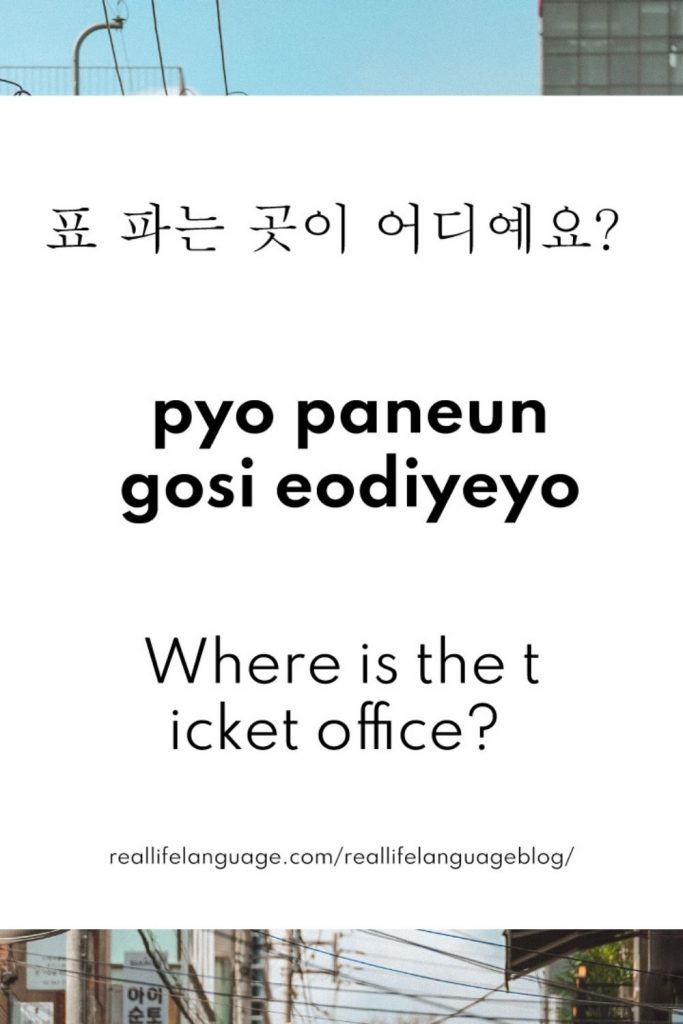
How to Learn Korean Script through Chunking
Korean script is deceptively easy to learn.
When we learn to read, we learn what the words we say and hear look like. When you can read, you can learn anything.
Your access to Korean will open up immensely when you can read. There are many great tools out there nowadays to do so. Today, I am going to share my method of learning to read Korean.
When I was an English instructor at Sejong University in Seoul, I learned to read Korean on the subway on the way to work.
Learning to read a language in the context of everyday communication is any easy way to let your learning serve double duty. You can learn the Korean alphabet while you learn language for real life.
What is powerful about this is that it presents language in meaningful chunks–words and phrases designed to get you communicating right away.
Here are some chunks to learn to speak and read Korean for getting around:
Getting around 교통편 이용하기 gyotongpyeon iyonghagi
subway 지하철 Jihacheol
train 기차 Gicha
bus 버스 Beoseu
taxi 택시 Taeksi
I need to go to ___________, please. ______로 가 주세요. ___ro ga juseyo
Where is the ticket office? 표 파는 곳이 어디예요? pyo paneun gosi eodiyeyo?
Where can I buy a ticket? 표는 어디서 삽니까? pyoneun eodiseo samnikka ?
One ticket, please. 표 한 장 주세요. pyo han jang juseyo
Where is the bus stop? 버스 정류장이 어디예요? beoseu jeonnyujang-i eodiyeyo?
How much does it cost to the city center? 시내 중심까지 얼마예요? sinae jungsimkkaji eolmayeyo?
How much does it cost to the airport? 공항까지 얼마예요? gonghangkkaji eolmayeyo?
Here, please. 여기요. Yeogiyo
Where is the closest taxi stand? 제일 가까운 택시 승차장이 어디예요?
jeil gakkaun taeksi seungchajang-i eodiyeyo?
Where is the closest subway stop? 제일 가까운 지하철역이 어디예요? jeil gakkaun jihacheol-yeoki eodiyeyo
I’d like to rent a car, please. 차를 렌트하고 싶은데요. chareul renteu- hago sipeundeyo
A small car. 소형차 Sohyeongcha
A medium car. 중형차 junghyeongcha
A big car. 대형차 daehyeongcha
I would like a ticket to______까지가는 표주세요. ___kkaji ganeun ___________.
pyo juseyo
I would like a round trip ticket. 왕복표 주세요. wangbokpyo juseyo
At what time _________? 몇 시에 _______? myeot sie ______?
Is it close? 가까워요? Gakkawoyo
Is it far? 멀어요? Meoreoyo
Turn left. 좌회전 하세요. jwahoejeon haseyo
Turn right. 우회전 하세요. uhoejeon haseyo
Go straight. 직진 가세요. Jikjin haseyo
block 블록 Beulok
roundabout 로터리 roteori
Do you have a map? 지도 있어요? jido isseoyo
This link has a guide with survival tasks and links to audio file podcasts. These podcasts are not traditional. They are bite-sized files of language in chunks. Use them to create your own playlists. Play, listen, repeat, and learn. Once you have enough of these chunks, you’ll start making your own sentences with what you’ve learned.
Get your Korean for Travel and Beginners Phrasebook.
Phrasebooks are powerful because they focus completely on communication. They don’t get into the grammar. If they do, it’s not much. They just get into telling you what you need to be able to communicate with people. You can make your own based on any topic if you have a notebook.
Podcast: Play in new window | Download
Subscribe: RSS